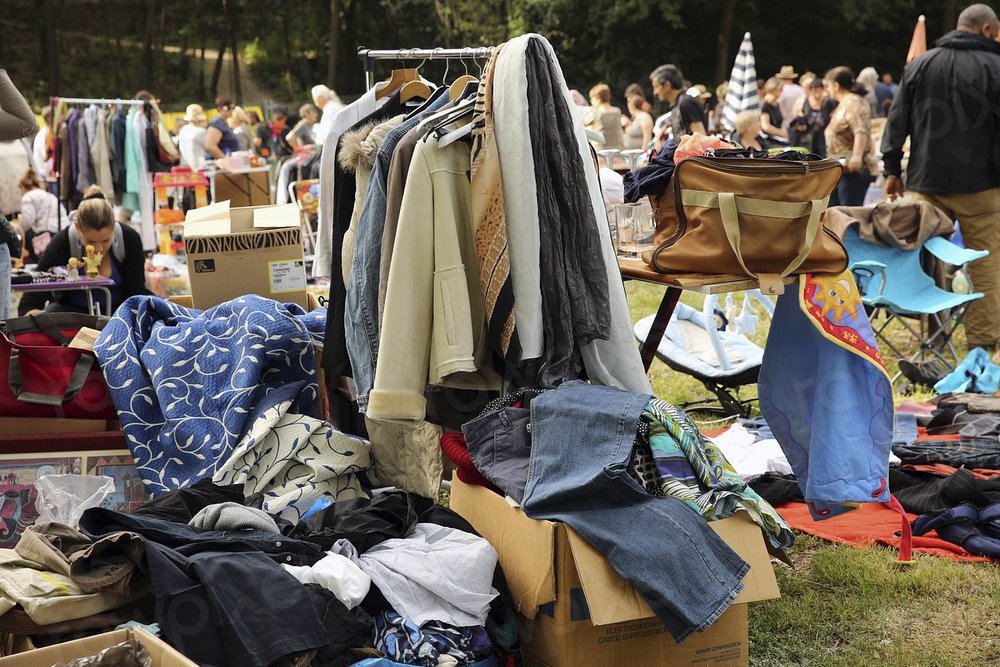In an era where social influencers wield considerable sway over consumer behaviour, their potential to exacerbate or alleviate the climate crisis looms large. The current influencer culture, often characterized by a relentless promotion of overconsumption, glamorizing frequent air travel, and showcasing an endless array of products, contributes significantly to environmental degradation. This unsustainable lifestyle, driven by a model of instant gratification, not only fuels overconsumption but also ignores the long-term consequences of such actions, both on the environment and human values.
The reality is stark: our planet is grappling with the detrimental effects of human activities. The climate system is undergoing unprecedented changes due to human influence, leading to severe environmental and social consequences. Influencers, by their vast reach and impact, are uniquely positioned to perpetuate this crisis or become harbingers of change. The need to shift values from materialistic excess to sustainable living is urgent and undeniable.
Acknowledging this, some influencers have begun to use their platforms to promote sustainability, ethical consumption, and environmental awareness. This emerging trend of ‘deinfluencing’ — persuading followers to make mindful choices and reject unnecessary consumerism — is a beacon of hope. It signals a growing awareness among influencers and their audiences about the importance of sustainable living in the face of a looming climate emergency.

At this critical juncture, influencers must introspect and realign their content with the values of environmental stewardship and responsible consumption. This article delves into how influencers can transform their platforms into powerful tools for promoting sustainability, thus playing a pivotal role in shaping a more conscientious and environmentally responsible society.
The Environmental Cost of Influencer Culture
The influence of social media celebrities on consumer behaviour is undeniable, yet this influence often comes at a steep environmental cost. From private jet escapades to endorsing fast fashion, many influencers are inadvertently fueling a cycle of overconsumption and ecological harm.
Take, for instance, the notorious incident of a YouTuber with millions of followers who attempted to deliver a fast-food order via a private jet. This extravagant act epitomizes the excesses of influencer culture and highlights the sheer disregard for the environmental impact of such stunts. Air travel, especially private jet flights, significantly contributes to carbon emissions, worsening the climate crisis.
Fast fashion is another arena where influencers often play a dubious role. Brands like Shein and Zara are frequently promoted, enticing young audiences with trendy, low-cost apparel. However, this comes with a hidden cost: textile waste and non-biodegradable materials that harm the environment. Influencers inadvertently support an industry detrimental to the planet by encouraging a cycle of buying and discarding.

Luxury brands, too, are not immune to this criticism. Often, high-end fashion houses indulge in practices far from sustainable yet glamorized by influencers. This contradiction between luxury and sustainability is a topic that demands attention, as explored in several articles on LuxuryActivist.com.
The issue extends beyond fashion and travel. Influencers often promote a lifestyle of excess, from lavish parties to extensive home renovations, without considering the environmental footprint of such activities. In their quest for visibility, brands are complicit in offering products and experiences far removed from sustainable living.
This reckless promotion of overconsumption harms the environment and sets a dangerous precedent for impressionable followers. Influencers, often role models for the younger generation, must be more conscientious about their message. They must understand the power of their platform and the responsibility that comes with it.
However, not all hope is lost. There is a growing trend among influencers using their platform to advocate for sustainability and responsible living. This shift is crucial, as influencers can reshape consumer attitudes and promote a lifestyle that respects and preserves our planet.

The call for a more responsible influencer culture is not just a demand from environmentalists but a necessity for the future of our planet. The first step in this direction is acknowledging the problem and understanding the impact of these actions. LuxuryActivist.com delves deeper into how luxury brands can embrace sustainability, a lesson from which influencers and the brands they promote can learn.
Two Examples not to follow: The Environmental Impact of SHEIN and TEMU
In our daily paradox in which we try to save humanity from a climate catastrophe and still over-consume more than we should, some brands still wonder if climate change is a reality. They should probably look by the window of their air-conditioned offices and see what is happening outside.
SHEIN, Bad buzz, Bad everything
The fashion giant SHEIN has been criticized for its unsustainable business practices. This brand, known for its low prices and rapid production, has perpetuated overconsumption. Its business model, driven by high sales volumes, disregards the environmental and ethical consequences. SHEIN hauls, where influencers showcase a vast amount of clothing bought at low prices, are particularly problematic, as they promote a lifestyle of excess and wastefulness.
SHEIN’s practices have significant environmental impacts. They contribute to the pollution of freshwater, the creation of microplastics, and an expected increase in carbon emissions by 2050 due to the fast fashion industry’s practices. Moreover, SHEIN’s misleading claims about sustainability and ethical production on their website only exacerbate consumer ignorance regarding the true environmental cost of their purchases.

TEMU is a NO
TEMU, another uber-cheap online marketplace, has also been scrutinised for its environmental and ethical impacts. The brand’s business model, which involves shipping products directly from China, relies heavily on air transport, significantly increasing greenhouse gas emissions. Using cheap, low-quality plastics in packaging and products contributes to environmental degradation and pollution.
The ethical concerns surrounding TEMU are alarming. There have been allegations of products being made using forced labour, particularly in regions like Xinjiang, known for human rights abuses. Furthermore, TEMU’s business practices have been detrimental to local economies and small businesses, with accusations of intellectual property theft and exploiting small Chinese businesses through aggressive pricing strategies.
Digital influencers play a significant role in promoting brands like SHEIN and TEMU. Their endorsements and haul videos drive consumer interest in these brands, often overshadowing the detrimental environmental and ethical implications. Influencers’ promotion of these brands leads to increased sales, fueling a cycle of overconsumption and environmental degradation. This highlights the need for influencers to be more responsible and transparent about the brands they endorse, considering the broader impact of their promotions on the environment and society.
The business practices of SHEIN and TEMU, amplified by digital influencer endorsements, pose significant environmental and ethical challenges. Promoting these brands by influencers contributes to a culture of overconsumption, with far-reaching impacts on our planet and its inhabitants.

Influencers and Brands: Pioneering Sustainability on Social Media
In a world increasingly aware of environmental challenges, influencers and brands have the opportunity to drive meaningful change. They can leverage their platforms for the greater good by shifting focus from overconsumption to sustainability. Here are some innovative ways influencers can promote environmental consciousness alongside strategies for brands to collaborate effectively in this mission.

For Influencers:
- Promote Sustainable Products and Brands: Influencers can prioritize partnerships with brands with verifiable sustainable practices. By showcasing eco-friendly products, from clothing made of recycled materials to biodegradable household items, influencers can encourage their followers to make more environmentally conscious choices.
- Educational Content: Creating content that educates audiences about environmental issues, such as climate change, biodiversity, and sustainable living, can significantly impact. This could include straightforward lifestyle changes, like reducing energy consumption or adopting a plant-based diet, explained engagingly.
- Highlight Local and Small Businesses: Supporting local businesses reduces the carbon footprint associated with shipping and promotes community-based economies. Influencers can spotlight small, local brands that practice sustainability, driving community growth and environmental awareness.
- Encourage Minimalism and Mindful Consumption: Influencers can challenge the norm of overconsumption by promoting a minimalist lifestyle. This could involve showcasing how to repurpose items, encouraging a capsule wardrobe, or discussing the benefits of buying less but higher quality.
- Participate in Environmental Campaigns and Initiatives: Joining global and local environmental initiatives, such as tree planting drives or beach clean-ups, and sharing these experiences can inspire followers to participate in such activities.

For Brands:
- Partner with eco-conscious influencers: Brands should seek partnerships with influencers passionate about sustainability. This aligns the brand with authentic advocacy, enhancing credibility and appeal among environmentally conscious consumers.
- Transparency in Operations: Brands need to be transparent about their sustainability practices. Sharing details about sourcing, manufacturing, and corporate social responsibility initiatives builds trust and educates influencers and their audiences.
- Sustainable Influencer Merchandise: When sending products to influencers, brands should ensure that the packaging is eco-friendly and that the products are sustainably produced.
- Collaborate on Sustainable Projects: Brands can collaborate with influencers on projects like limited-edition sustainable product lines or campaigns that donate a portion of proceeds to environmental causes.
- Incentivize Sustainable Choices: Brands can encourage influencers to promote actions like recycling programs, sustainable fashion challenges, or eco-friendly transportation options.
Influencers and brands have a unique opportunity to lead the way in promoting sustainability. Adopting and endorsing environmentally friendly practices and products can significantly contribute to our planet’s well-being while setting a positive example for millions of followers. This approach benefits the environment and enhances the reputation and appeal of influencers and the brands they represent.
Conclusion: A Call for Responsibility and Change
The unchecked behaviour of influencers and brands promoting a lifestyle of excess and overconsumption is not just a superficial issue; it’s a significant contributor to our planet’s environmental crisis. The relentless showcasing of fast fashion, lavish travel, and consumerist excesses by social influencers is more than a trend – a dangerous precedent that undermines efforts to combat climate change and sustainability initiatives.
In a world grappling with the repercussions of environmental neglect, it is irresponsible and short-sighted for influencers to continue endorsing products and lifestyles that exacerbate these issues. Their vast reach and impact on millions of followers come with a profound responsibility. It is disheartening to see this influence used to perpetuate harmful practices rather than to champion sustainability and responsible living.
Brands, too, are culpable. The lure of profit has led many to overlook their products’ and marketing strategies’ environmental and ethical implications. They must reassess their practices, ensuring that their operations and the influencers they partner with align with sustainable and ethical standards.
As consumers, we must also hold influencers and brands accountable. Our choices and voices are powerful. By supporting influencers who advocate for the environment and choosing brands committed to sustainability, we can drive a collective movement towards a more responsible and eco-conscious world.
In conclusion, it is time for a paradigm shift. Social influencers, brands, and consumers must transition from a culture of wastefulness to mindfulness. Our planet’s health and future generations’ well-being depend on our actions today. Let us choose to be part of the solution, not the problem.
José Amorim
Information sourced by the author for luxuryactivist.com. All content is copyrighted with no reproduction rights available. Images are for illustration purposes only.
